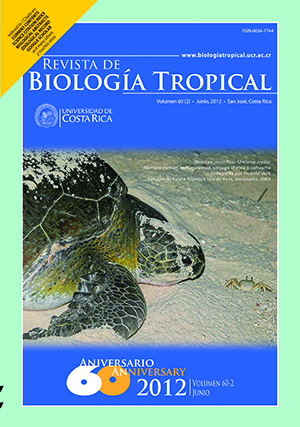Abstract
Ferns, which are usually colonizing different environments and their roots frequently present mycorrhization, have two adult stages in their life cycle, the sporophytic and the gametophytic phase. This paper describes the experimental mycorrhizal association between Pteris vittata leptosporangiate fern and a strain of Glomus intraradices during the life cycle of the fern, from spore germination to the development of a mature sporophyte. The aim of this study was to compare the colonization pattern of in vitro cultures of G. intraradices along the fern life cycle with those found in nature. For this, mature spores were obtained from fertile P. vittata fronds growing in walls of Buenos Aires city, Argentina. Roots were stained and observed under the light microscope for arbuscular mycorrhizal colonization. Approximately, 75 fern spores were cultured in each pot filled with a sterile substrate and G. intraradices (BAFC N° 51.331) as inoculum on the surface. After germination took place, samples were taken every 15 days until the fern cycle was completed. In order to determine colonization dynamics each sample was observed under optical and confocal microscope after staining. Gametophyte was classified as Adiantum type. Male and female gametangia were limited to the lower face, mycorrhizal colonization started when they were differentiated and took place through the rhizoids. Spores and vesicles were not found in this cycle stage. Paris-type mycorrhizal colonization was established in the midrib and in the embrionary foot. It was colonized by external mycelium. When the first root was developed soil inoculum colonized de novo this structure and Arum-type colonization was observed. This study proves that the type of colonization is determined by the structure of the host, not by the fungus. Both the gametophyte and embryo foot have determined growth and Paris-type colonization, while, sporophyte roots have undetermined growth and Arum-type colonization. The structures found in vitro cultures were highly similar to those found under natural conditions.
This work is licensed under a Creative Commons Attribution 4.0 International License.
Copyright (c) 2012 Revista de Biología Tropical
Downloads
Download data is not yet available.

